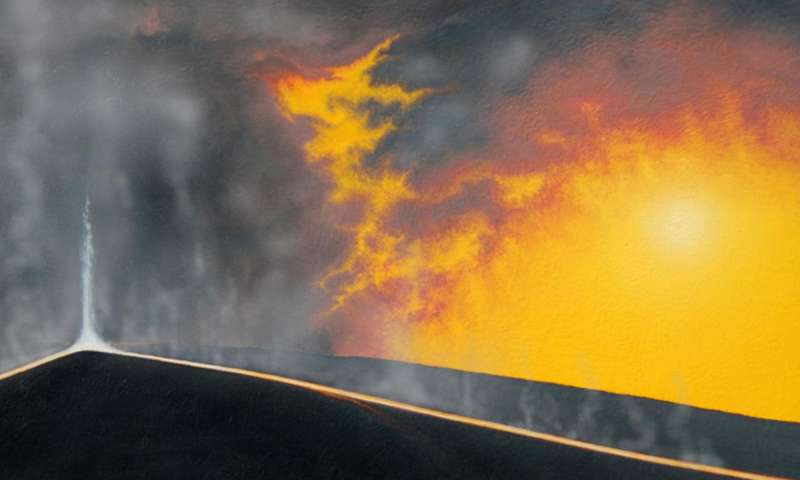Researchers discover hottest lavas erupted in 2.5 billion years
Tue 23 May 2017, 15:47:30

Washington D.C. : A team of researchers discovered that deep portions of earth's mantle might be as hot as it was more than 2.5 billion years ago.
The study was led by Esteban Gazel from Virginia Tech College of Science and his doctoral student Jarek Trela of Deer Park, Illinois.
Gazel said that the study brings unprecedented evidence on the thermal evolution of the deep Earth during the past 2.5 billion years.
Gazel further explained that the Archean Eon, covering from 2.5 to 4 billion years ago, is one of the most enigmatic times in the evolution of our planet.
During this time period, the temperature of Earth's mantle - the silicate region between the crust and the outer core - was hotter than it is today, owing to a higher amount of radioactive heat produced from the decay of elements such as potassium, thorium and uranium.
What is really fascinating about this study is that we show that the planet is still capable of producing lavas as hot as during Archean time period, Gazel added.
Because Earth was hotter during this period, this interval of geologic time is marked by the widespread of occurrence of a unique rock known as komatiite.
"Komatiites are basically superhot versions of Hawaiian style lava flows," Gazel said. "You can imagine a Hawaiian lava flow, only komatiites were so hot that they glowed white instead of red and they flowed on a planetary surface with very different atmospheric conditions, more similar to Venus than the planet we live on today."
Earth essentially stopped producing
abundant hot komatiites after the Archean era because the mantle has cooled during the past 4.5 billion years due to convective cooling and a decrease in radioactive heat production, Gazel stated.
abundant hot komatiites after the Archean era because the mantle has cooled during the past 4.5 billion years due to convective cooling and a decrease in radioactive heat production, Gazel stated.
The researchers studied a set of rocks from the 90 million-year-old Tortugal Suite in Costa Rica and found that they had magnesium concentrations as high as Archean komatiites, as well as textural evidence for extremely hot lava flow temperatures.
Gazel noted that the higher the temperature, the higher the magnesium content of a basalt."
The team also studied the composition olivine, the first mineral that crystallised from these lavas.
Olivine, a light green mineral, is an extremely useful tool to study a number of conditions related to origin of a lava flow because it is the first mineral phase that crystallizes when a mantle melt cools.
The team found that Tortugal olivines crystallized at temperature nearing 2,900 degrees Fahrenheit (1,600 degrees Celsius) -- as high as temperatures recorded by olivines from komatiites -- making this a new record on lava temperatures in the past 2.5 billion years.
Based on our results from Tortugal lavas, we think that mantle plumes are 'tapping' a deep, hot region of the mantle that hasn't cooled very much since the Archean, Gazel explained.
Trela said that the data suggests that this suite of rocks offers tremendous opportunity to answer key questions regarding the accretion of the Earth, its thermal evolution, and the geochemical messages that mantle plumes bring to the surface of the planet."
No Comments For This Post, Be first to write a Comment.
Most viewed from Specials
Most viewed from World
AIMIM News
Latest Urdu News
Most Viewed
May 26, 2020
Do you think Canada-India relations will improve under New PM Mark Carney?
Latest Videos View All
Like Us
Home
About Us
Advertise With Us
All Polls
Epaper Archives
Privacy Policy
Contact Us
Download Etemaad App
© 2025 Etemaad Daily News, All Rights Reserved.













.jpg)
.jpg)
.jpg)
.jpg)
.jpg)
.jpg)
.jpg)
.jpg)
.jpg)




















